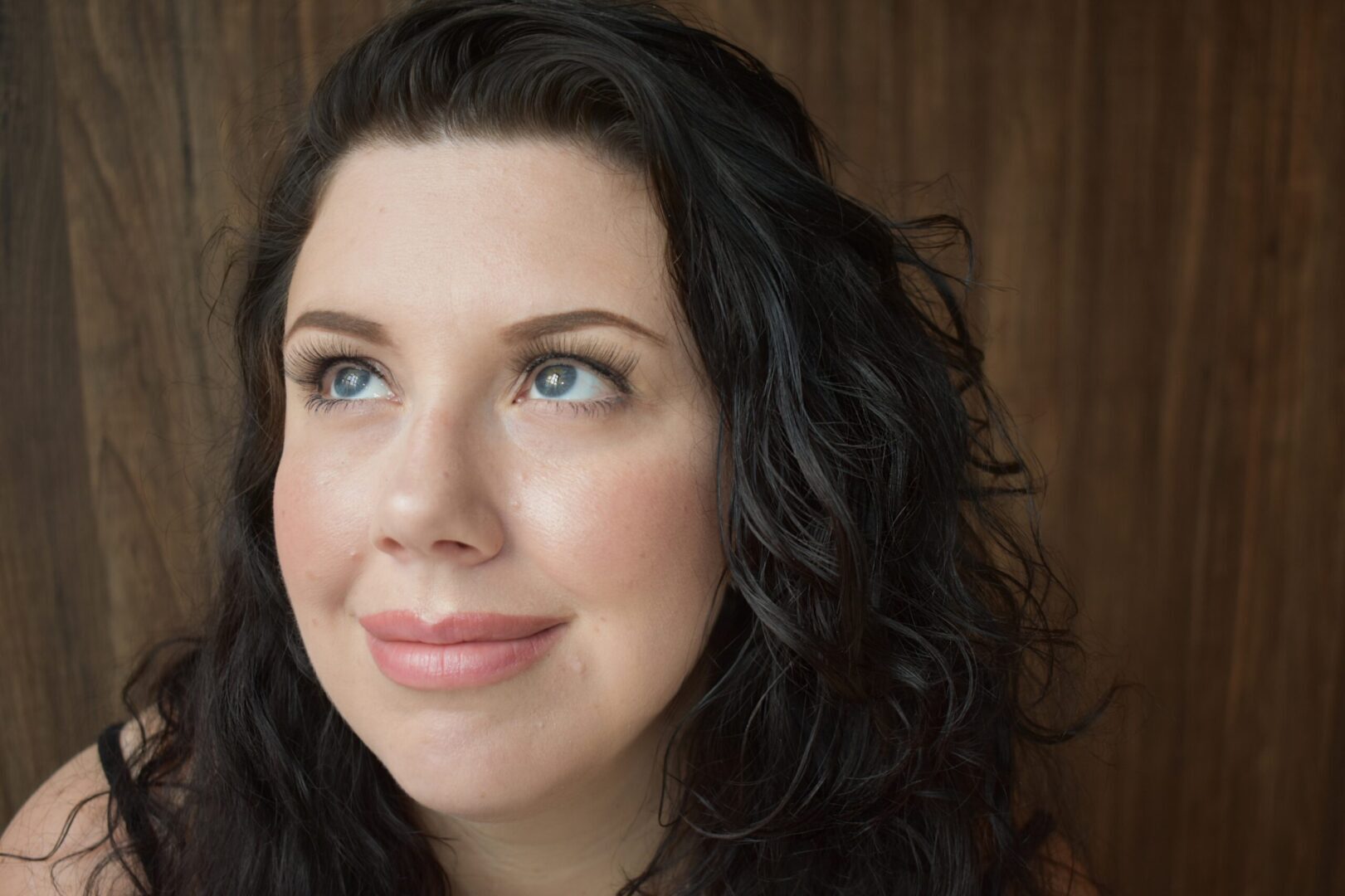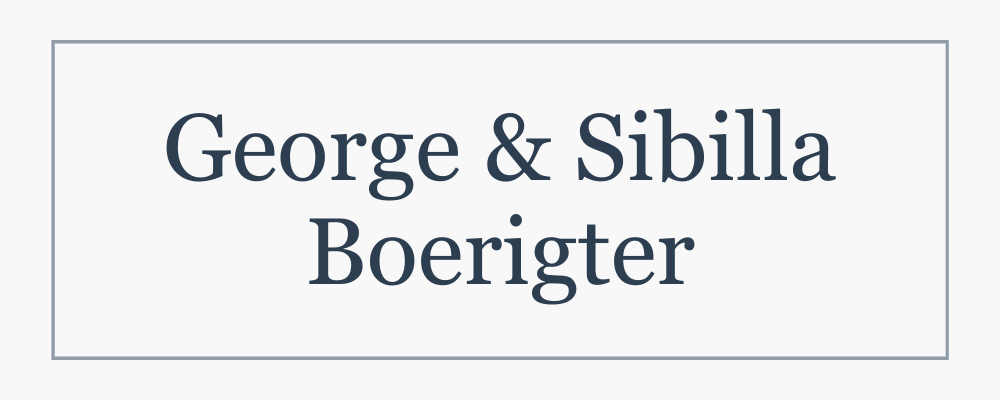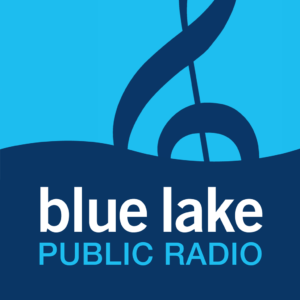Night at the Opera


Night at the Opera
Program
Saturday, April 27, 2024, 7:30 p.m.
Jack H. Miller Center for Musical Arts, Hope College
Johannes Müller Stosch, Music Director and Conductor
Marina Harris, soprano
Prelude to Die Meistersinger
Richard Wagner (1813-1883)
Four Last Songs
Richard Strauss (1864-1949)
Frühling (Spring)
September
Beim Schlafengehen (At Bedtime)
Im Abendroth (At Sunset)
Marina Harris, soprano
Intermission
Suite No. 1 from Carmen
Georges Bizet (1838-1875)
Prelude
Aragonnaise
Les Toréadors
Air for Strings
Arthur Foote (1853-1937)
Suite from Der Rosenkavalier, Op. 59
Richard Strauss (1864-1949)
Experience the epitome of Romantic music with colorful and expressive pieces from great operas. Marina Harris, a California-based soprano, will join HSO for Strauss’s masterpiece song cycle. |
Tickets are $28 for adults and $5 for students through college.
Learn more about the music…
We will be hosting not only the Classical Chat series at Freedom Village, but also Pre-Concert Talks! Details below:
Classical Chats at Freedom Village: These informative and fun talks are led by Johannes Müller-Stosch and take place at 3:00pm on the Thursday before each Classics concert. (Freedom Village, 6th Floor Auditorium, 145 Columbia Ave.)
Pre-Concert Talks: These talks, led by Johannes Müller-Stosch and Amanda Dykhouse, are online under the "Pre-Concert Talk" Tab.
New to the Symphony? Check out the Frequently Asked Question page…
Parking Map at the Miller Center
Holland Symphony Orchestra will reserve and monitor Lot 40 for handicapped parking. The faculty parking lots are available for parking after 5pm

Prelude to Die Meistersinger von Nürnberg
Richard Wagner
Born: May 22, 1813, Leipzig
Died: February 13, 1883, Venice
Composed: 1861-1862
Approximate Duration: 9 minutes
Instrumentation: 3 flutes (one doubling piccolo), 2 oboes, 2 clarinets, 2 bassoons, 4 French horns, 3 trumpets, 3 trombones, tuba, timpani, percussion (cymbals, triangle), harp, strings
Most of Richard Wagner's operas are based on mythological themes, but he departed from this material in his opera, Die Meistersinger von Nürnberg, his only mature comedic opera. In this work, written in 1861-62, he delves into the guild system of 16th century Nuremberg. The Meistersingers were a guild of amateur poets and musicians who uphold traditional rules for composing and performing songs. They organize a singing competition in which the winner wins the hand of Eva, the daughter of a Meistersinger, in marriage. Eva loves the young knight Walther von Stolzing, who is not a Meistersinger but wants to participate in the contest to win her hand. Despite lacking formal training in the Meistersingers' rules, Walther is talented and passionate about music. Hans Sachs, a guild member, mentors Walter and helps him prepare for the competition. Walter faces ridicule and attempts at sabotage by the established Meistersingers, but he perseveres and ultimately wins the prize. The opera concludes with a celebration of art, love, and the enduring traditions of the Meistersingers.
The opera's overture, composed in 1862, introduces the spirit and themes of the opera. It opens with a majestic brass fanfare, depicting the regal and proud traditions of the Meistersingers. This theme is juxtaposed with lighter, more playful motifs, representing the youthful energy and creativity of the apprentice singer, Walther von Stolzing. This contrast highlights the opera's central conflict between innovation and tradition. The middle section of the Prelude features a lyrical and expressive theme, introducing the love story between Walther and Eva. This tender melody, carried by strings and woodwinds, captures the romance and emotional depth of their relationship. Towards the end, the music builds to a powerful climax, with all the thematic elements converging in a triumphant and exultant finale.
To watch a video of this piece, click here.
Four Last Songs, Op. posth.
Richard Strauss
Born: June 11, 1864, Munich
Died: September 8, 1949, Garmisch-Partenkirchen
Composed: 1948
Approximate Duration: 24 minutes
Instrumentation: 4 flutes (two doubling piccolo), 3 oboes (one doubling English horn), 3 clarinets (one doubling bass clarinet), 3 bassoons (one doubling contrabassoon), 4 French horns, 3 trumpets, 3 trombones, 1 tuba, timpani, harp, celeste, strings.
Strauss composed his Four Last Songs in 1948, using poetry by Hermann Hesse and Joseph von Eichendorff. He probably had the voice of his wife, soprano Pauline de Anha, in mind when he wrote these emotional and nostalgic pieces. He often accompanied her on piano. Strauss didn’t know that these would be his “last songs.” His publisher attached the title to the song cycle after Strauss’s death, about a year after the songs were completed.
Famed soprano Renée Fleming described Strauss’s Four Last Songs as "an allegory of the passages of life." The music is deeply personal and universally resonant, offering a profound meditation on the beauty of life, the inevitability of its passing, and the transition to whatever mystery lies beyond death. Strauss is well known as one of the most brilliant masters of orchestral color. In this work he uses a massive orchestra–one that, in the hands of a lesser composer, could easily overwhelm a singer–to create a remarkable sense of intimacy. He is especially skilled at “word painting,” using musical colors and themes to depict the words in the text. In this work Strauss shows his remarkable ability to capture the complexities of human emotion in music.
The cycle opens with "Frühling" (Spring), an introspective and tender meditation on the arrival of spring and the renewal of life. The music is filled with a sense of wonder and awe, as Strauss's rich harmonies and soaring melodies paint a vivid picture of nature's awakening. The soprano’s voice goes higher as she dreams of the sky and trees. The flute imitates bird calls. Strauss also adds a solo trumpet in this song and "Im Abendrot" to provide a countermelody to the soprano's voice.
"September" follows, capturing the melancholy beauty of autumn, evoking themes of farewell and acceptance. The text reflects on the passage of time and the inevitability of change, while Strauss's music evokes the wistful mood of the season with its poignant harmonies and delicate orchestration. The use of muted brass creates a sense of distance and nostalgia, enhancing the autumnal mood of the song.
"Beim Schlafengehen" (“Going to Sleep”) is a profound reflection on the end of the day and the approach of night, with its shimmering orchestration and ethereal vocal lines conveying a sense of calm resignation. The soprano's soaring lines are supported by lush orchestral textures, creating a sense of calm and serenity as the day comes to a close. The sparkling celesta evokes a starry sky as the soprano yearns to forget all thoughts in slumber.
The cycle concludes with "Im Abendrot" (At Sunset), a setting of Joseph von Eichendorff's text that portrays an elderly couple reflecting on their lives together as they face the end of their days. Strauss's music is achingly beautiful, capturing both the sadness of farewell and the peaceful acceptance of life's end. Two trilling flutes represent the poem’s pair of larks ascending into the sky (a metaphor for the souls of the old couple). The use of cymbals and tam-tam adds a shimmering quality to the orchestration, heightening the sense of mystery and awe in the music. The light fades as the song unfolds, until the soprano asks, “Ist dies etwa der Tod?” (“Is this perhaps death?”). The orchestra whispers the wistful “transfiguration” theme from Strauss’s Death and Transfiguration, written sixty years earlier.
To watch a video of this piece, click here.
“Prélude & Aragonaise” and “Les Toréadors” from Carmen
Georges Bizet
Born: October 25, 1838, Paris
Died: June 3, 1875, near Paris
Composed: 1873-1874
Premiered: March 3, 1875, Opéra-Comique in Paris
Approximate Duration: 5 minutes
Instrumentation: 2 flutes (one doubling piccolo), 2 oboes (one doubling English horn), 2 clarinets, 2 bassoons, 4 French horns, 2 trumpets, 3 trombones, timpani, percussion (bass drum, castanets, cymbals, snare drum, tambourine, triangle), harp, strings
When French people went to the comic opera in the nineteenth century, they were used to fairy tale stories with “happily ever after” endings. It is understandable, then, that most of them were shocked and appalled at Georges Bizet’s opera Carmen, based on the play by Merimée. In this opera, Don José, a young soldier, is betrothed to Micaëla, his childhood sweetheart. She is good and faithful, refusing the advances of other young men. Don José starts out as a “good” character. He initially ignores the fiery Gypsy girl, Carmen, who works at the cigarette factory in Seville, but Carmen is not used to being ignored and soon seduces him. As Micaëla tries to rescue him, Don José loses his ability to act rationally and becomes obsessed with Carmen. Once Carmen wins Don José, she quickly tires of him and pursues the vain and swaggering matador Escamillo. Don José cannot give up his consuming love for Carmen, but she cannot become tied down to him and give up her freedom. Don José, in a fit of jealous rage, stabs her, and she and the curtain fall.
Initially, Carmen met with mixed reviews. Many at the time considered it a failure. Actually, although the opera received some adverse criticism for the “indelicacy” of its subject, it met with fair success at the box office, being performed thirty-three times in the two-month period between its premiére and the death of Bizet from a ruptured artery. Eventually an orchestral suite was extracted from themes throughout the opera. Most of the movements come from orchestral interludes meant to entertain the audience while the scenery was changed. The Prélude sets an ominous tone for the opera and introduces the “Fate” theme. The “Aragonaise” is rhythmic and percussive, and is the introduction to the final act of the opera. The “Toréadors” movement contains two melodies from the opera. Its opening theme comes from the prelude of the opera, and it also reappears in the final scene outside the bullring in Seville. This melody is charged with excitement. The contrasting melody is from the suave “Toréador Song,” an aria that Escamillo sings as he tries to interest Carmen. In this aria, Escamillo sings of the similarity of matadors to soldiers and sings prophetically of danger.
To watch a video of this piece, click here.
Air for Strings
Arthur Foote
Born: March 5, 1853, Salem, Massachusetts
Died: April 8, 1937, Boston
Composed: 1891, Boston
Approximate Duration: 5 minutes
Instrumentation: strings
Arthur Foote was born in Salem, Massachusetts. He showed musical talent at a young age and began studying piano and composition. He graduated from Harvard and is the first significant American composer who was trained in the US. As a composer he was a member of the "Second New England School" of composers and the “Boston Six,” which also included George Whitefield Chadwick, Amy Beach, Edward MacDowell, John Knowles Paine, and Horatio Parker. This group of composers sought to create a distinct American musical identity by blending European Romantic traditions with American folk and indigenous music. Foote was an organist at First Church in Boston for 32 years and one of the founders of the American Guild of Organists. He was also a respected teacher, serving on the faculty of the New England Conservatory of Music for many years. His influence extended to many younger American composers, including Charles Ives, who admired Foote's music and considered him a mentor.
Foote frequently programmed the music of the Romantic composers, such as Brahms and Wagner, who were influences on his own compositional style. Foote's music is characterized by its lyrical melodies, rich harmonies, and meticulous craftsmanship. The "Air" for string orchestra showcases his gifts. It has a lyrical and flowing melody, which is passed between the different sections of the orchestra. The gentle and contemplative mood of the "Air" creates a sense of serenity and introspection, drawing the listener into its melodic beauty.
To listen to this piece, click here.
Suite from Der Rosenkavalier, Op. 59
Richard Strauss
Born: June 11, 1864, Munich
Died: September 8, 1949, Garmisch-Partenkirchen
Composed: 1909-1910
Premiered: Suite in 1945
Approximate Duration: 22 minutes
Instrumentation: 3 flutes (one doubling piccolo), 3 oboes (one doubling English horn), 3 clarinets (one doubling e-flat clarinet), bass clarinet, 3 bassoons (one doubling contrabassoon), 4 French horns, 3 trumpets, 3 trombones, 1 tuba, timpani, percussion (bass drum, cymbals, glockenspiel, ratchet, snare drum, tambourine, triangle), 2 harps, celeste, strings.
Richard Strauss composed his opera, Der Rosenkavalier, between 1909 and 1910. The romantic comedy is set in 18th century Vienna, based on a libretto by Hugo von Hofmannsthal. The plot revolves around a love triangle between three characters: the noblewoman Marschallin, her young lover Octavian, and Sophie, who is in the process of getting engaged to Baron Ochs. Octavian is tasked to present the engagement rose to Sophie at a formal party, but at this ceremony, the Baron flirts with a chambermaid, who is actually Octavian in disguise. Sophie also meets Octavian there, while undisguised, and they fall in love. The action continues with a series of misunderstandings and comedic situations. At the end, the disguised Octavian conspires with the noblewoman Marschallin to expose the Baron’s unfaithfulness. Sophie learns about Octavian’s dual identity and confronts him. They eventually reconcile, and their union is gracefully honored by the Marchallin.
The suite from Der Rosenkavalier is a collection of musical highlights from the opera. Strauss himself arranged this work in the early 1940s, capturing the essence of the opera's rich orchestration, lush harmonies, and captivating melodies. The music begins with the strings, which are soon joined by the full orchestra. It features a rich, romantic melody that is passed between the different sections of the orchestra, building in intensity and grandeur as it progresses. The next section, "Presentation of the Rose," features a beautiful duet between the young lovers Octavian and Sophie. The music is tender and lyrical, with lush harmonies and delicate textures, reflecting the blossoming romance between the two characters.
The waltz has long been associated with Viennese elegance and sophistication, and the lively and energetic "Waltz Sequence" captures that spirit perfectly. The graceful melodies, swirling rhythms, and elegant orchestration evoke the glamor and charm of a Viennese ball. This movement is a showcase for Strauss's skill as an orchestrator, with its intricate textures and shimmering colors.
The final section, from the final trio of the opera, is a poignant and emotional conclusion to the suite. The voices sing a heartfelt farewell, accompanied by lush orchestral textures. The music is tender and poignant, with a bittersweet quality that reflects the characters' conflicting emotions. The orchestration is rich and expressive, with lush harmonies and soaring melodies that tug at the heartstrings. The trio builds to a dramatic climax before resolving in a peaceful and serene conclusion, bringing the suite to a satisfying close.
To watch a video of this piece, click here.
Marina Harris, soprano
Heralded by the San Francisco Chronicle for her “knockout combination of vocal power and expressive eloquence,” soprano Marina Harris is quickly establishing herself as a talent to watch. An alumna of the prestigious Adler Fellowship program at the San Francisco Opera, Ms. Harris’ appearances with the company included four world premiere operas; Nolan Gasser’s The Secret Garden (in the role of Susan Sowerby), Mark Adamo’s The Gosepel of Mary Magdalene (Tamar/Girl/Seeker), Tobias Picker’s Dolores Claiborne (Maid), Jack Perla’s Love/Hate (Samantha), and covering numerous leading roles, most notably the role of Elsa in Lohengrin. In September 2013, she garnered national attention as a last-minute replacement for Patricia Racette in the role of Elena (Helen of Troy) in San Francisco Opera’s season-opening production of Boito’s Mefistofele.
Marina has also joined the roster of the Los Angeles Opera to cover the verismo roles of Nedda in Pagliacci and the title role in Madama Butterfly. She has made leading role debuts with Opera Idaho (Tatiana in Eugene Onegin), Pacific Opera Project (title role in Ariadne auf Naxos) and the Southern Illinois Music Festival (Mathilde in Guillaume Tell). Ms. Harris’ international credits include the Festival der jugend Stimmen in Switzerland as Elisabeth in Tannhäuser and as a guest performer with the Sichuan Conservatory of Music in Chengdu, China. 2021-22 saw performances with The Infinite Stage in her hometown of Long Beach, a return to Southern Illinois in the role of Fiordiligi (Felicia) in Così fan tutte (aka Covid fan tutte), a company debut with GLOW Lyric Theater in their 2021 Festival, Berta in The Barber of Seville with the Sacramento Philharmonic & Opera, Colette in the world premiere of Laura Schwendiger’s Cabaret of Shadows with Musiqa Houston, the Marquise of Berkenfield in La Fille du Regiment with the Opera Buffs at the Colburn School of Music, and performances at Rockwood Music Hall in New York City with composer and pianist Felix Jarrar. In 2023, Marina sang with the Sun Valley Opera in recital with crossover star Ashley Faatoalia, the soprano solos in Mendelssohn’s Symphony No. 2 (Lobgesang) with the Sacramento Choral Society and Orchestra, and released a debut EP with her band Bones & Teeth.
From the baroque period to contemporary, Marina has been featured as a soprano soloist in a diverse range of repertoire, including Mahler’s Symphony No. 2 (Resurrection), Brahms’ Ein Deutsches Requiem, Mozart’s Great Mass in C Minor, Verdi’s Requiem, Rossini’s Stabat Mater, and J.S. Bach’s Mass in B Minor. Additionally, she has performed in the West Coast premieres of Charles Stanford’s Stabat Mater and Cecelia MacDowall’s Magnificat with the Sacramento Choral Society and Orchestra. She originated the role of Angelina (wife of famous Portuguese diplomat Aristides de Sousa Mendes, who helped at least 10,000 Jews escape Nazi Germany during WWII) in Bruce Neely’s oratorio, Circular 14. Ms. Harris has been a guest soloist with the Marin Symphony, the California Symphony, the West Los Angeles Symphony, and the San Francisco Chamber Orchestra, among many others. In recital, Marina has appeared with Carnegie Hall’s Neighborhood Concert Series, with the Brava! Opera Theater, as part of The Song Continues with Marilyn Horne and the Weill Institute of Music, and with San Francisco Performances. She has also been featured on WQRX, New York’s leading classical radio station, along with baritone Norman Garrett and Ken Noda of the Metropolitan Opera.
In 2015, Ms. Harris was awarded the Dorothea-Glatt-Förderpreis in the triennial International Wagnerstimmen Competition, securing her place as one of the top singers of Wagnerian repertoire worldwide. Marina has won numerous other awards for her performances of the Wagnerian repertoire, including the 2015 George London Vienna Prize and the George London-Leonie Rysanek Award in 2014, and the Gerda Lissner Foundation’s Vocal Competition in both 2015 and 2017. She has received additional grants and awards from the Wagner Society of Northern California, the Merola Opera Program, the Palm Springs Opera Guild, and the Loren L. Zachary International Vocal Competition.
Ms. Harris resides in Long Beach, California
To watch the pre-concert talk, click here.
- This event has passed.
Details
- Date:
- April 27
- Time:
-
7:30 pm - 9:30 pm
- Cost:
- $28
Venue
- Jack H. Miller Center for Musical Arts at Hope College
-
221 Columbia Ave.
Holland, MI 49423 United States + Google Map
Organizer
- Holland Symphony Orchestra























